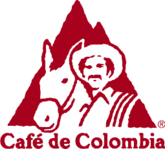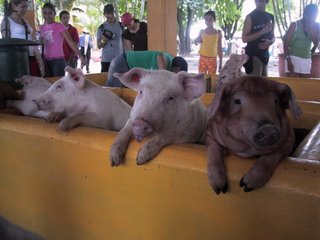Santa Marta - First Impressions
(Santa Marta Photos)
I said in my last post that Santa Marta is considered as Colombia's premier beach destination. I should qualify this by saying premier 'continental' beach destination. Colombia lays claim to two small islands in the Caribbean sea, San Andres and Providencia (that Nicaragua is contesting), which could be said to be more 'idyllic'.
Following the recommendations of my guide book, I had made a reservation at the Hospederia La Casa Familiar (said to be "highly recommended"). The infamous Miramar guesthouse was just down the street. I had read mixed reviews about the "original gringo hostel" and so chose the Casa Familiar instead. The Casa Familiar was clean, quiet and relaxed. The rooms were rather cell like, but mine had a firm mattress, a ceiling fan and a bathroom. For CO$15,000 (about US$6.75) I was not about to complain. The place was family run and felt safe (the lock on my door was a substantial looking padlock).

Santa Marta is one of Colombia's smaller but significant ports. The port installation itself is small, and along side appeared to be a coal loading facility. My hotel was hardly a couple of blocks from the port entrance. This will give you some idea what the area was like. However, my street was not much different from any other in the city. Next door was a dive shop and across the street a restaurant serving pretty good, cheap food. For CO$2000 (less than US$1) you could get a liter of freshly prepared juice (served in a liter sized plastic measuring cup).

I have to say that the city is not attractive. The majority of buildings are decidedly run down, from peeling paint - good condition - to crumbling. The streets are narrow, and often, at intersections water collects forming stagnant, stinking puddles. The odors could be strong, with tell-tale stains running from the wall of a building across the sidewalk to the curb. All of this is not helped by a bad littering habit. Filthy would not be too strong of a word. I felt sorry for the few street cleaners I saw in their head to toe suits and dust masks.
Perhaps, that was a harsh assessment. On the other hand the city can be quite lively. Walking around during a week day, the streets are busy and noisy with the calls of the various street sellers, constant hooting of taxi and motorcycle horns and shouts of children playing. Away from the water there are street, avenues and squares bustling with commercial activity. There also seem to be a lot of people just hanging around and doing little if anything, sitting on window sills, loitering at street corners.

For the visitor, the area where he would spend most of his time is Santa Marta's waterfront. The port and coal loader sit at the north end of a crescent shaped bay and to the south some headlands fall steeply into the sea. In between is a narrow strip of sand, which is the city's beach. The beach was always packed with families and the water with screaming children.

I did enjoy walking along the waterfront boulevard, taking in the scene. The people strolling was almost equaled by the of vendors. Vendors of cold drinks with their polystyrene coolers strapped to hand cards. Ice cream vendors on tricycles whose cold boxes often resembles man sized smiling penguins. (These always brought a smile to my face.) There were the men pushing carts of mangoes and then there where the juice sellers stationed under whatever shade could be found. There were men carrying what looked like old fashioned wooden tool boxes selling shrimp and oyster cocktails. But, probably most numerous where the "tinto, tinto, tinto" men carrying thermoses of coffee: black with sugar - "tinto", or with milk - "perico".
I spent the day exploring, slightly fatigued from the over night bus trip. But, I did manage to arrange some scuba diving for the following morning (not hard when the dive shop was next door) and a day tour of Tayrona Park for the day after.































